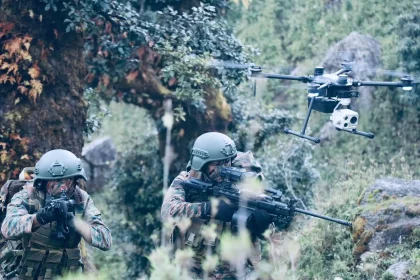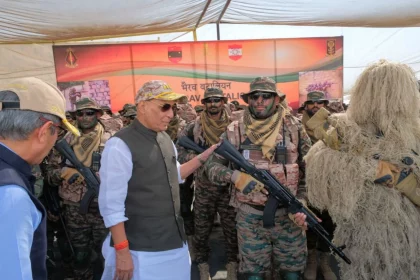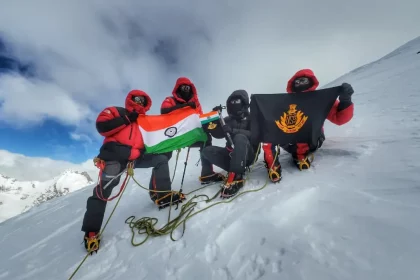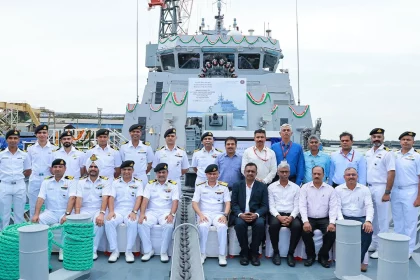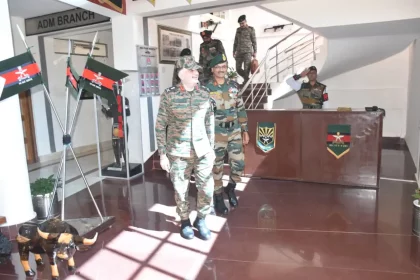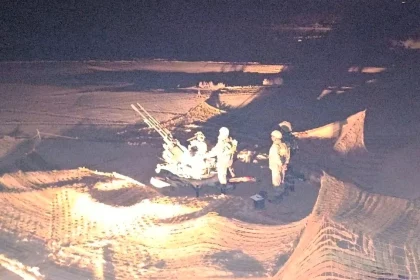Golden Key Division Troops Sharpen Combat Edge with Drone Warfare and Next-Gen Technologies in High-Altitude Training
Golden Key Division Integrates Drone Warfare and Advanced Tech to Bolster High-Altitude Combat Readiness.
Indian Army Releases First Pictures of Bhairav Battalion Commandos
Bhairav isn't just a name—it's a warning.
NSG Commandos Summit Mt Satopanth Ahead of Everest 2026 Mission
A 12-member NSG mountaineering team, led by Maj Akhilesh Bhatt, successfully summited Mt Satopanth (7,075 m) during the Pre-Everest Expedition…
Indian Navy Inducts ‘Mahe’ – First Indigenous Anti-Submarine Warfare Shallow Water Craft Built by CSL
The delivery of INS Mahe marks a major milestone in India’s quest for self-reliance in naval shipbuilding, enhancing the Navy’s…
Lt Gen Abhijit S Pendharkar Reviews Security Preparedness in Nagaland and Assam
The visit reaffirmed the Army’s commitment towards ensuring sustained peace and security in Nagaland and Assam through coordinated efforts, operational…
Southern Command Demonstrates Unified Air Defence Power During Exercise Trishul
Joint Exercise ‘Sudarshan Vayu Sanchar’ showcases seamless synergy of Army, Navy, and Air Force in integrated air defence operations, embodying…

